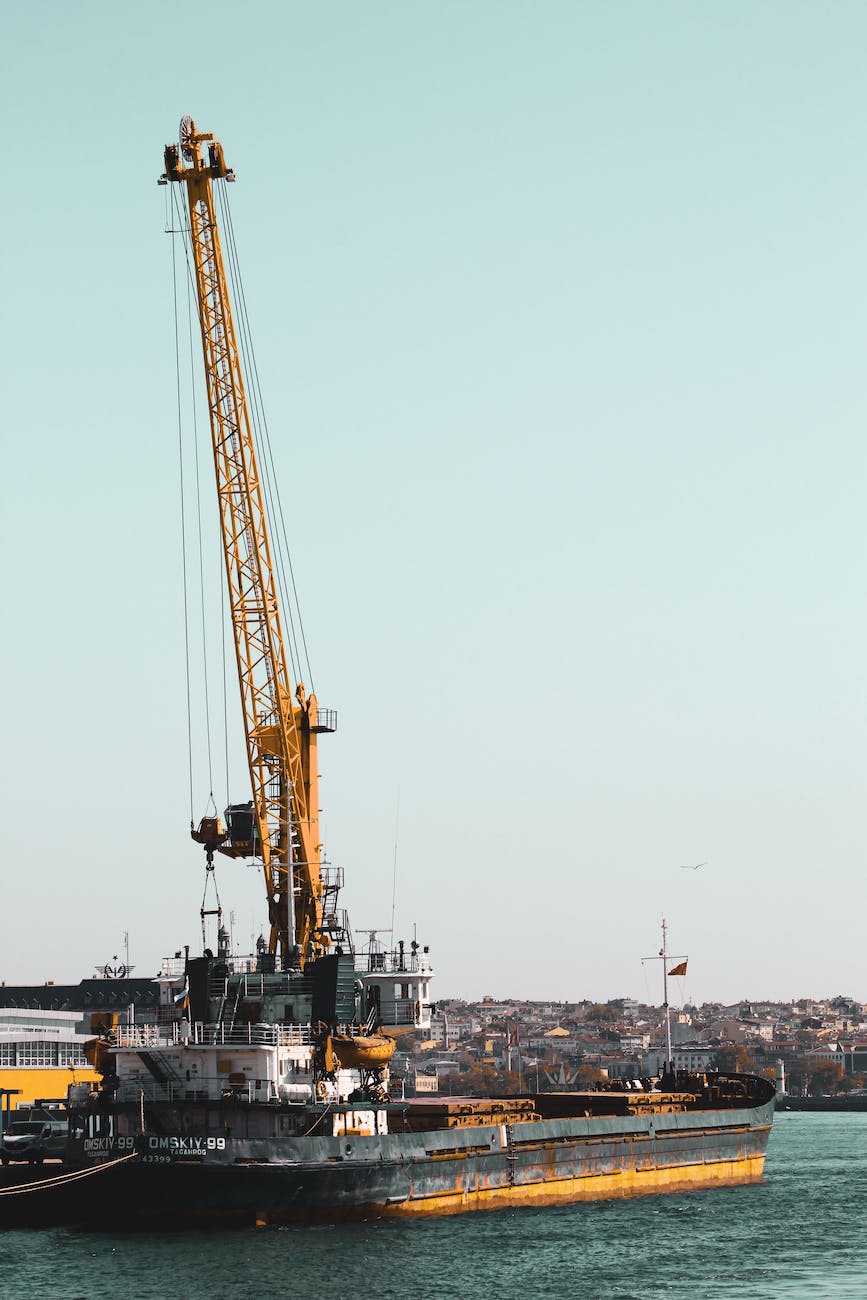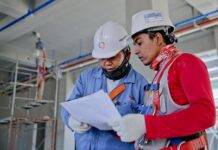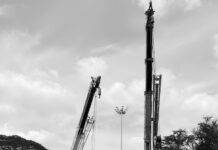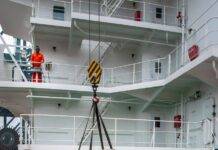
How to Fill a Lifting Plan for a Crane
How to Fill a Lifting Plan for a Crane : In the world of construction and heavy lifting, safety is paramount. To ensure the safety of personnel and equipment, one crucial document that must be prepared before any lifting operation is a lifting plan for a crane. This comprehensive guide will take you through the process of creating a foolproof lifting plan, step by step.
Now, let’s delve into the details of each section to ensure you have a comprehensive understanding of how to create a meticulous lifting plan for a crane.
1. Introduction
Lifting operations involving cranes are intricate and potentially dangerous. A well-thought-out lifting plan is crucial to mitigate risks and ensure a smooth operation.
2. Understanding the Basics
Why is a Lifting Plan Necessary?
A lifting plan outlines the procedures and precautions to be taken during a crane operation. It serves as a roadmap for safe and efficient lifting.
Who is Responsible for Creating the Plan?
The responsibility for creating the lifting plan often falls on the shoulders of a qualified engineer or a certified safety officer.
3. Gathering Essential Information
Load Specifications
Accurate information about the load to be lifted, including weight, dimensions, and center of gravity, is vital.
Crane Specifications
Knowing the crane’s lifting capacity, boom length, and other specifications is essential to match it with the load requirements.
Site Conditions
Assess the site for ground stability, obstacles, and overhead obstructions.
4. Risk Assessment
Identifying Hazards
Identify potential hazards such as electrical lines, adverse weather conditions, or unstable ground.
Calculating Risk Levels
Quantify the risks associated with the lifting operation to determine the safety measures needed.
5. Selecting the Right Crane
Choosing the appropriate crane based on load and site conditions is crucial.
6. Lifting Accessories and Rigging
Select suitable slings, shackles, and rigging equipment, ensuring they meet safety standards.
7. Establishing Safety Measures
Safety Barriers
Set up safety barriers to keep unauthorized personnel at a safe distance.
Personal Protective Equipment (PPE)
Ensure that all workers involved have the necessary PPE.
8. Communication Protocols
Establish clear communication channels among team members involved in the lift.
9. Creating a Step-by-Step Procedure
Detail each step of the lifting operation, including load attachment, lifting, and placement.
10. Monitoring and Supervision
On-Site Supervision
Appoint a qualified supervisor to oversee the operation.
Real-time Monitoring
Utilize technology like load indicators and CCTV to monitor the lift.
11. Emergency Response Plan
Prepare for contingencies with a well-defined emergency response plan.
12. Documenting the Plan
Compile all information into a comprehensive lifting plan document.
13. Review and Approval
Have the plan reviewed and approved by qualified personnel.
14. Execution of the Lifting Plan
Follow the plan meticulously during the lifting operation.
15. Post-Lift Evaluation
Evaluate the operation’s success and identify areas for improvement in future plans.
Scenario: You’re on a construction site, and you need to lift a heavy concrete block using a mobile crane to the 5th floor of a building under construction. The concrete block weighs 10,000 pounds (or 4.54 metric tons). Here’s how you would fill out the lifting plan:
- Load Specifications:
- Weight of Load: 10,000 pounds (4.54 metric tons)
- Dimensions: 6 feet long x 4 feet wide x 4 feet high
- Center of Gravity: Determined to be at the geometric center of the block (2 feet from each side and 2 feet from the bottom).
- Crane Specifications:
- Crane Type: Mobile Crane
- Crane Capacity: The crane is rated for a maximum lifting capacity of 15 metric tons.
- Boom Length: The crane has a telescopic boom with a maximum extension of 30 meters.
- Site Conditions:
- Site Assessment: The site has been assessed for ground stability, and it’s confirmed to be stable.
- Weather Conditions: The weather is clear, with no significant wind or precipitation.
- Risk Assessment:
- Hazard Identification: Hazards such as overhead power lines have been identified and marked.
- Risk Calculation: A risk assessment matrix indicates that the overall risk for this lift is low, given favorable conditions and proper precautions.
- Selecting the Right Crane:
- The crane’s lifting capacity of 15 metric tons comfortably exceeds the weight of the load (4.54 metric tons), making it a suitable choice.
- Lifting Accessories and Rigging:
- Rigging Equipment: Grade 100 steel chains and shackles are selected for rigging, ensuring they can handle the load safely.
- Establishing Safety Measures:
- Safety Barriers: Barricades and warning signs are placed around the lift area to keep unauthorized personnel at a safe distance.
- Personal Protective Equipment (PPE): All personnel involved in the lift are required to wear hard hats, high-visibility vests, and steel-toed boots.
- Communication Protocols:
- Clear hand signals and two-way radios are used for communication between the crane operator and ground personnel.
- Creating a Step-by-Step Procedure:
- The procedure includes load attachment, lifting, movement to the 5th floor, and careful placement under the guidance of the signal person.
- Monitoring and Supervision:
- An experienced crane operator is assigned to the lift.
- Real-time monitoring of load weight is done using load indicators to ensure it remains within safe limits.
- Emergency Response Plan:
- An emergency response plan outlines procedures for potential incidents, such as equipment failure or sudden adverse weather changes.
- Documenting the Plan:
- All the details mentioned above are documented in the lifting plan, which includes diagrams and checklists.
- Review and Approval:
- The lifting plan is reviewed and approved by a certified engineer and the site safety officer.
- Execution of the Lifting Plan:
- The lifting operation proceeds according to the plan, with close adherence to safety measures and communication protocols.
- Post-Lift Evaluation:
- After the lift, a thorough evaluation is conducted, including checking the load for any damage, inspecting the rigging equipment, and gathering feedback from the team for continuous improvement.
This practical example demonstrates the systematic approach to filling out a lifting plan for a crane, considering load specifications, crane capabilities, safety measures, and risk assessment. It ensures a safe and successful lifting operation in a construction setting.
CONCLUSION
In conclusion, a well-structured lifting plan is the cornerstone of safe crane operations. By following these steps and guidelines, you can ensure that your lifting plan is not only comprehensive but also effective in safeguarding lives and property.
How to Calculate SWL of Wire Rope Sling
How to Calculate Safe Man-Hours Worked at Worksite
How to calculate Sling capacity and Sling angle calculation formula
Lifting Shackle (D-Shackle) Load Calculation
Inspection of Hydra Crane/Farana
FAQs
- What is the primary purpose of a lifting plan for a crane?
- A lifting plan ensures the safe and efficient execution of crane operations, minimizing risks.
- Who is responsible for creating a lifting plan?
- Typically, a qualified engineer or certified safety officer is responsible for creating a lifting plan.
- Why is risk assessment crucial in a lifting plan?
- Risk assessment helps identify potential hazards and quantify the level of risk involved, leading to better safety measures.
- What role does communication play in crane operations?
- Clear communication among team members is essential to coordinate the lifting operation safely.
- What should you do in case of an emergency during a lift?
- A well-defined emergency response plan should be in place, and it should be executed promptly and efficiently.
Now that you have a comprehensive guide on how to create a lifting plan for a crane, you can ensure the safety and success of your lifting operations. Remember that safety should always be the top priority in any construction project.
























